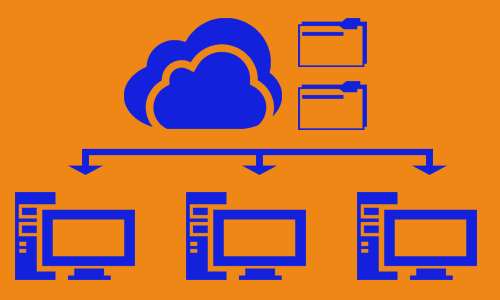Many businesses, organizations and municipalities are increasingly implementing electronic document management in their offices. It's estimated that by 2021, the enterprise content management market will be worth $66.27b as organizations are finding it more and more difficult to ignore the value of such an investment.
"Whoa, hold up, put on the brakes," you say. "What is electronic document management?"
Screeeeech.
Fair question! The truth is, you're probably already familar with EDM, even if not by name. Developed initially in the 1980s, thousands of organizations today use EDM systems such those from Laserfiche and Digitech Systems. Microsoft's SharePoint is also a common EDM system. EDM often goes by a variety of similar-sounding names and acronyms, such as:
- Electronic Document Management System (EDMS)
- Document Management System (DCM)
- Enterprise Content Management (ECM)
- Enterprise Content Management System (ECMS)
And so on! Basically, if it sounds like an organized place to keep your stuff on a computer, it probably relates to EDM in some way. Some industries, such as the medical field, utilize highly specialized content management systems, such as McKesson Passport, to better support the unique needs in that vertical. Regardless of what you call it, or what industry you're in, at its most basic, EDM usually operates in the general same way.

There are often a lot of moving parts to an EDM system, but we'll keep this simple. With EDM, your organization's files are usually stored in a repository on a server in high quality image formats such as PDF or TIFF. The server can be located somewhere within your office building (we call this "on site" or "on premise") or it can be in the cloud, and as we've discussed before, the cloud is just a fancy term for a server that's someplace else.
You and your coworkers access this repository through a client on your personal computer. The client can be its own application or it can be through a web browser. This server-client relationship means that the documents can live centrally in one location, but everyone within your organization can look at them whenever they need to!
Step 1: Capture
So, before you can manage your documents electronically, they must first exist electronically! If your organization is just now implementing or considering implementing an EDM system, it's likely you'll have a plan to maintain electronic records moving forward, but all of your old back files? They've got to get in there too. This is typically accomplished with high speed scanners, which can either be done in-house or outsourced to a third party vendor. Imaging standards vary across state laws and industry guidelines, but as a rule of thumb, the pages are scanned into lossless PDF or TIFF at 300 dpi, matching color for color. This gives a nice clean, accurate image, suitable for archiving.
Read More: A Guide to Planning Your Document Scanning Project
Step 2: Indexing
It's not enough to scan your documents into your EDM system, they have to be organized and stored in such a way that they can quickly and easily be found. The broad term for this is called indexing. Document indexing can refer to, simply, the conventions by which you name and organize your files and folders, but more specifically, the tags and information attached to each document. This is called metadata, and can include anything; a person's name, an address, a purchase order number, or a product ID. This information categorizes the document and helps make it retrievable later.
Read More: What is Document Indexing?
Step 3: Retrieval
This is it. This is where all the hard work pays off. Exercising imaging best practices and using good indexing criteria means that your documents can be easily, quickly, and most importantly, accurately retrieved when you need them. Many EDM systems have folder structures, much like your PC, so visually find what you're looking for, but the real power from an EDM system is its search capabilities. Using optical character recognition (OCR) software, most EDM systems can actually read the words on the pages of your documents and this, combined with a smart indexing strategy, means you can find exactly what you're looking for right when you need it from the comfort of your desk.
So there you have it! That's electronic document management and how it works at its most basic. EDM can not only increase efficiency and reduce costs, but it also provides security and preservation of your organization's documents. It's a powerful investment all around!
Feeling better about electronic document management? Great! Feel free to also contact A&A to learn more about the benefits of EDMS including scanning, wokflow automation, and more!
